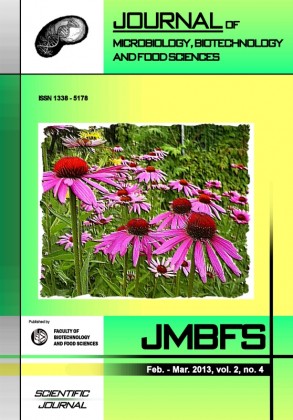MYCOTOXINS CONTAMINATION IN EDIBLE LAND SNAIL AT GRAZING PADDOCK ENVIRONMENT
Keywords:
Meat, mycoflora, microbiological contamination, food safety, edible molluscAbstract
Mycotoxins contamination of animal products is under reported. Juvenile edible land snails (Archachatina marginata) were exposed as sentinels in bottomless metal drums for 1 week at abandoned, new and reference sites respectively at grazing paddock environment, to assess the presence of foodborne microbiological mycotoxins contamination during the dry season. Mycological analysis of A. marginata samples revealed high (p<0.05) contamination at all paddocks ranged from 1.2-1.3 x 105 cfu-g. Results revealed values that were found to be unacceptable by FAO/WHO standards. The presence of Aspergillus niger, A. fumigatus and Penicillum expansum were noted as potential toxicogenic mycoflora. Snails were tolerant to all levels of contamination with no clinical signs of infection or mortality. This finding could serve as basis for assessing pre-slaughter microbial contamination of livestock farm/field environment in order to establish data with comparative epidemiological value, which could highlight early warning signals of food safety risk and cross-contamination of mycotoxins in the food chain.Downloads
Download data is not yet available.
Downloads
Published
2013-02-01
How to Cite
Ebenso, I., Ekwere, U., & Isong, N. (2013). MYCOTOXINS CONTAMINATION IN EDIBLE LAND SNAIL AT GRAZING PADDOCK ENVIRONMENT. Journal of Microbiology, Biotechnology and Food Sciences, 2(4), 2308–2319. Retrieved from https://office2.jmbfs.org/index.php/JMBFS/article/view/7494
Issue
Section
Microbiology
License
Copyright (c) 2013 Ime Ebenso, Uyimeobong Ekwere, Nkoyo Isong

This work is licensed under a Creative Commons Attribution 4.0 International License.
All papers published in the Journal of Microbiology, Biotechnology and Food Sciences are published under a CC-BY licence (CC-BY 4.0). Published materials can be shared (copy and redistribute the material in any medium or format) and adapted (remix, transform, and build upon the material for any purpose, even commercially) with specifying the author(s).

